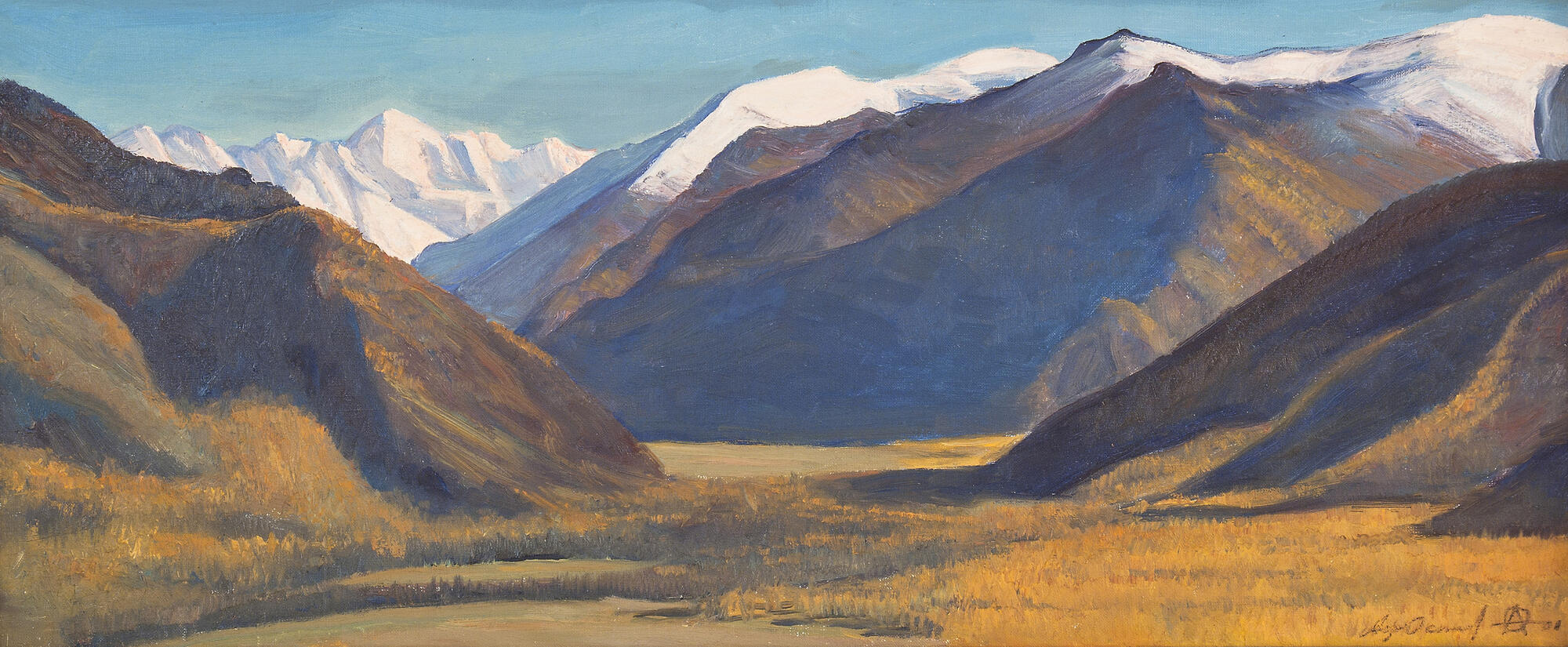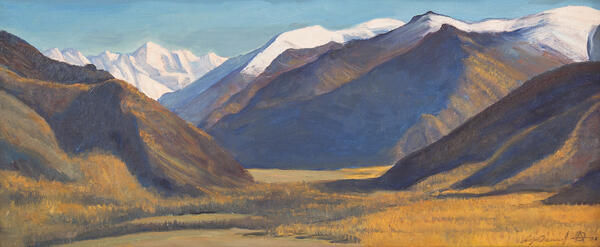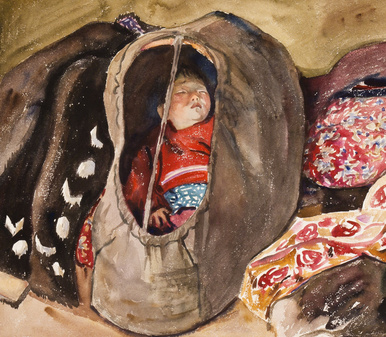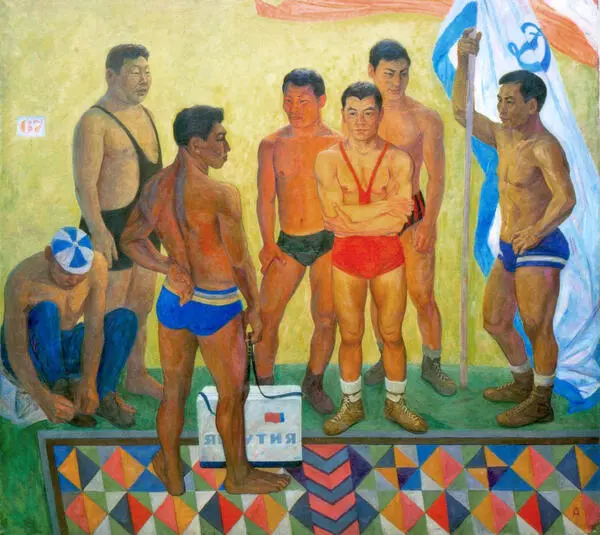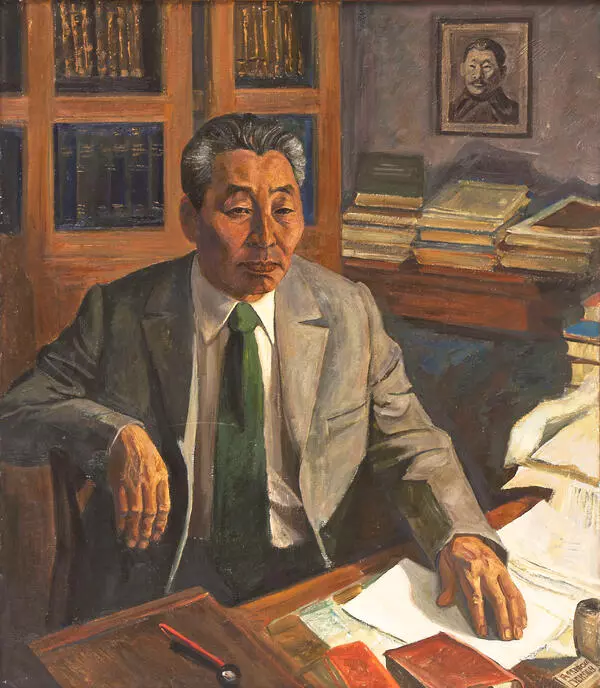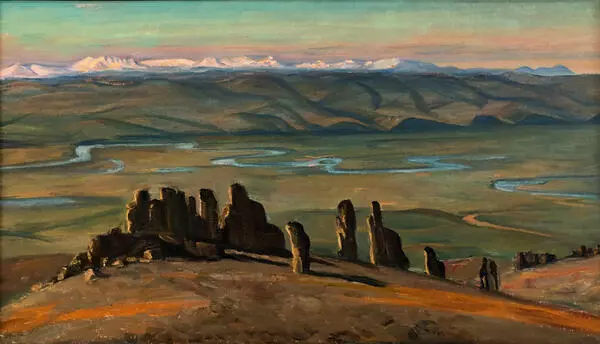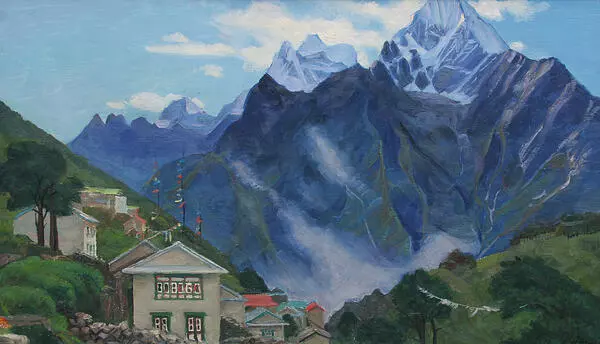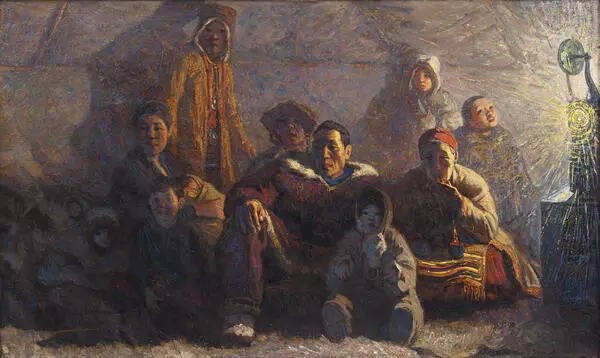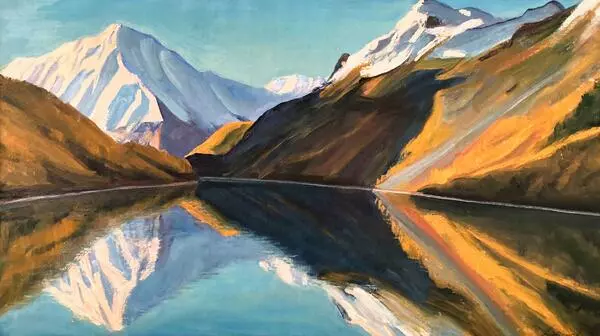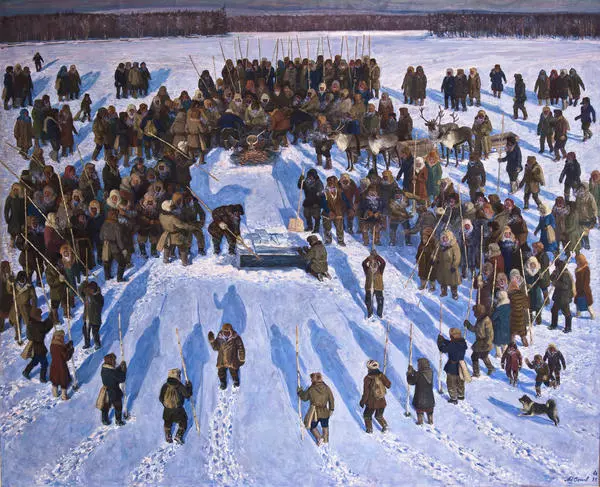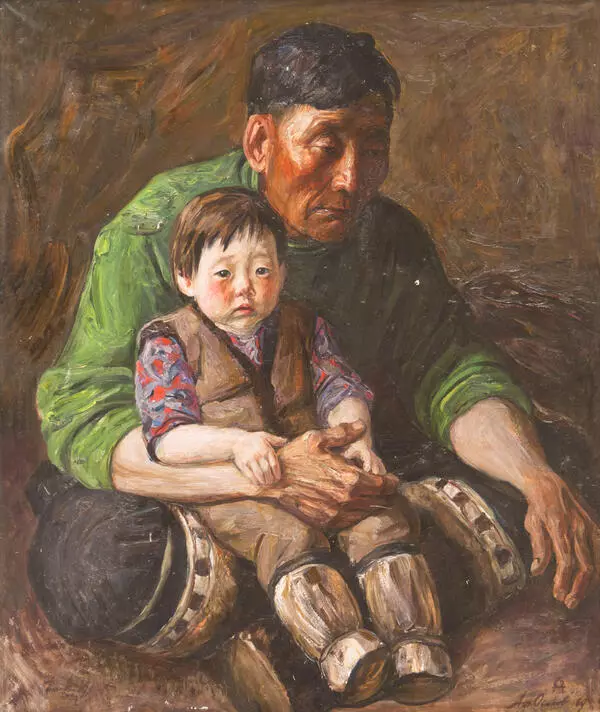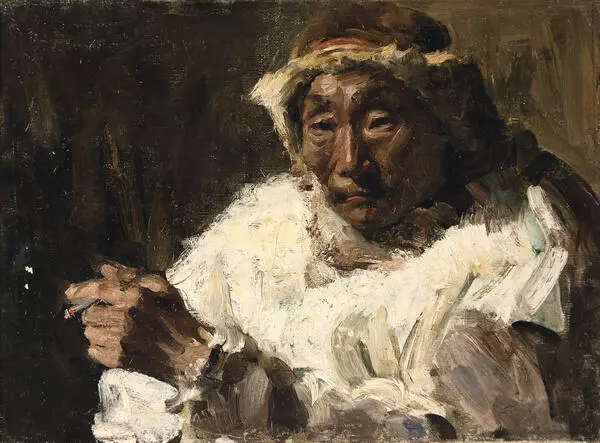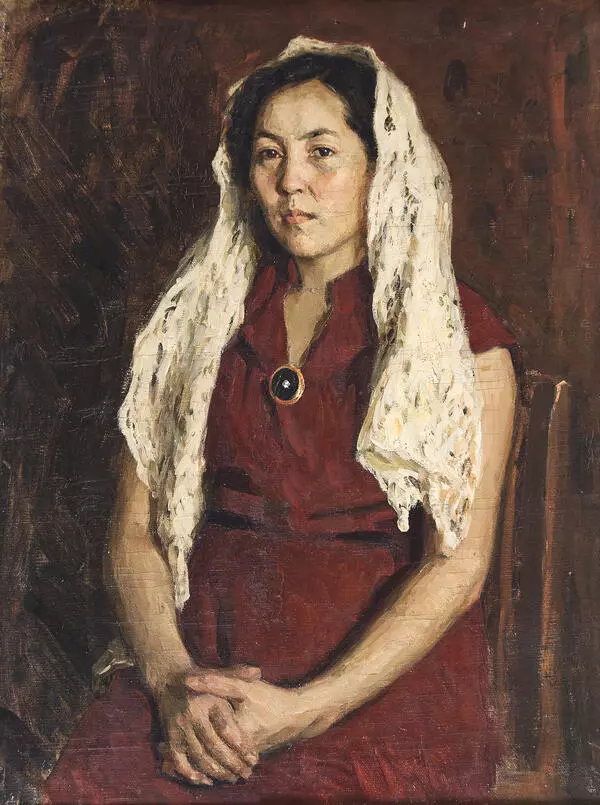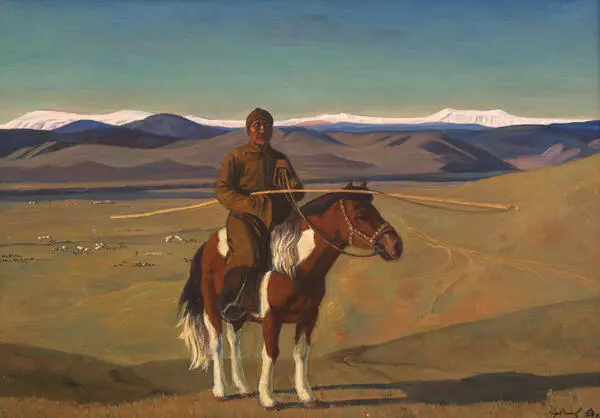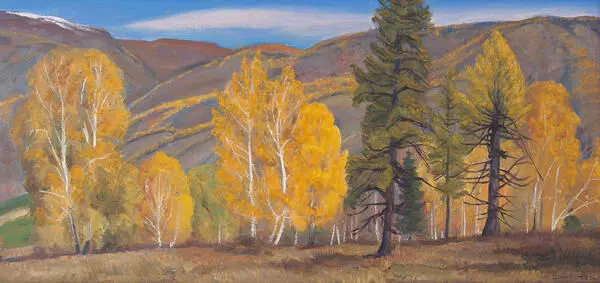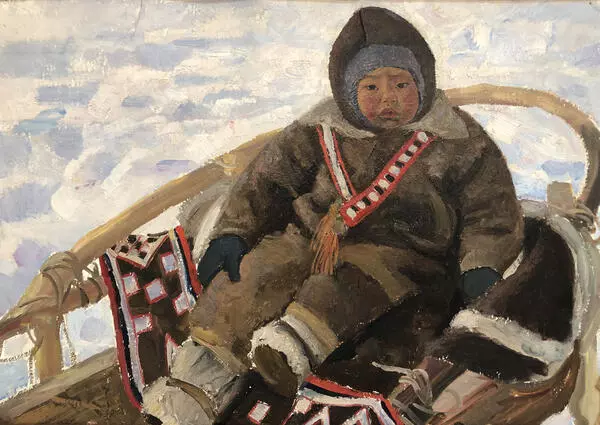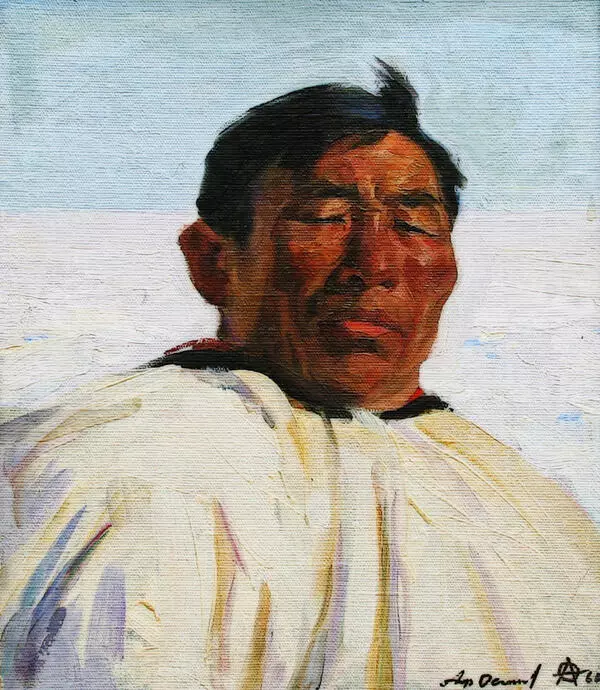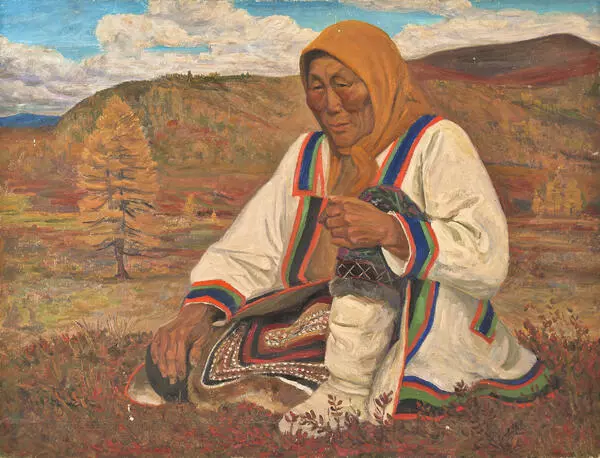The National Art Museum of the Republic of Sakha (Yakutia) features landscapes of Afanasy Osipov who was a Yakut painter, People’s Artist of the USSR, and full member of the Russian Academy of Arts. Osipov was one of the co-authors of the state emblem of the Republic.
The artist was born in 1928 in Gorny Ulus in Yakutia. He graduated from high school and technical school, went to Moscow to study at an art school and institute, and then he returned to his homeland. Here, in Yakutia, he taught painting at the Yakut Art School, traveled a lot around the country, for many years headed the Union of Artists of Yakutia, and organized exhibitions.
The audience got acquainted with the landscapes of Afanasy Osipov at his personal exhibition in Moscow in 1978 opened in connection with the 50th anniversary of the artist. Here, landscapes that were recently painted occupied almost half of the exhibition. They changed the idea of the Yakut painter whose work was perceived in a new light.
Afanasy Osipov painted the landscape “Off the Coast of Katun” in 2001. Katun (kadyn) means “lady, mistress, madam” if translated from Turkic. However, there is an opinion that its name contains a pre-Turkic word with the semantic meaning “river”. The wayward Katun is a mountain river that enchants with its beauty. Every time of the year, it changes its “outfit”, that is, the color of the water. The river can turn sky turquoise, get a milky hue, or become transparent like a tear. There are many legends, tales, and songs about Katun.
The painting features a majestic landscape, in the center of which is Katun. It is surrounded by Altai peaks.
Mountains in the landscape art of Afanasy Osipov are a separate direction. The mountain systems of Yakutia, Altai, the Himalayas, the Andes, Montenegro, and Central Asia have become an integral part of the artist’s work, and the canvas ‘Off the Coast of Katun’ is no exception. All the picturesque qualities of Osipov’s “mountain” landscape are displayed here, namely: snow-covered dazzling white peaks painted in warm colors, sun-drenched hills, and a cold palette of shaded slopes.
The artist was born in 1928 in Gorny Ulus in Yakutia. He graduated from high school and technical school, went to Moscow to study at an art school and institute, and then he returned to his homeland. Here, in Yakutia, he taught painting at the Yakut Art School, traveled a lot around the country, for many years headed the Union of Artists of Yakutia, and organized exhibitions.
The audience got acquainted with the landscapes of Afanasy Osipov at his personal exhibition in Moscow in 1978 opened in connection with the 50th anniversary of the artist. Here, landscapes that were recently painted occupied almost half of the exhibition. They changed the idea of the Yakut painter whose work was perceived in a new light.
Afanasy Osipov painted the landscape “Off the Coast of Katun” in 2001. Katun (kadyn) means “lady, mistress, madam” if translated from Turkic. However, there is an opinion that its name contains a pre-Turkic word with the semantic meaning “river”. The wayward Katun is a mountain river that enchants with its beauty. Every time of the year, it changes its “outfit”, that is, the color of the water. The river can turn sky turquoise, get a milky hue, or become transparent like a tear. There are many legends, tales, and songs about Katun.
The painting features a majestic landscape, in the center of which is Katun. It is surrounded by Altai peaks.
Mountains in the landscape art of Afanasy Osipov are a separate direction. The mountain systems of Yakutia, Altai, the Himalayas, the Andes, Montenegro, and Central Asia have become an integral part of the artist’s work, and the canvas ‘Off the Coast of Katun’ is no exception. All the picturesque qualities of Osipov’s “mountain” landscape are displayed here, namely: snow-covered dazzling white peaks painted in warm colors, sun-drenched hills, and a cold palette of shaded slopes.
